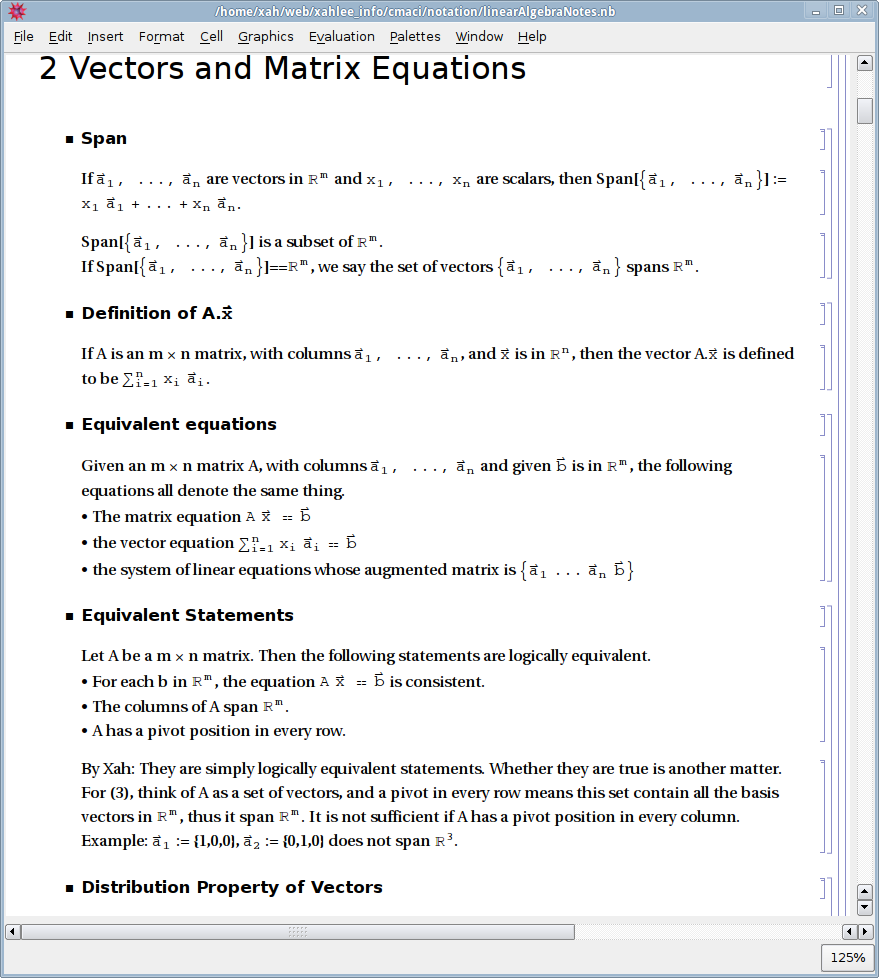Math Typesetting, Mathematica, MathML (2010)
Here's a linear algebra notes i wrote in 1998, using Mathematica version 3, with much math typesetting. linearAlgebraNotes.nb.
Mathematica 7 convert it to PDF very well. See: linearAlgebraNotes.pdf.
Surprisingly, when converting to HTML, it actually generated a valid html 〔see HTML Correctness and Validators (2008)〕 with valid CSS. See: linearAlgebraNotes.html
But further, it also exported to XML+MathML well: linearAlgebraNotes.xml.zip (can be viewed with Firefox 3.6.12). Very well done!

A note about Mathematica's typesetting. Mathematica's typesetting capabilities is best on this earth. It was invented with Mathematica version 3 in 1996. It's not just a inert incomprehensible code as in TeX. For example, typing 1/Sqrt[x^2 + y^3], press a button, then it gets rendered into a 2-dimensional math notation.
Yet, Mathematica understands it as a live math expression. When writing math, you don't need to learn some inane specialized formatting language. You just type as you code in a computer language.
Also, whatever complex math expressions are automatically formatted, meaning, automatically wrapped. All these capabilities, i'd attribute to 2 very simple ideas:
- A 100% regular nested syntax (as in lisp; but lisp's syntax has many irregularities. 〔see Fundamental Problems of Lisp, Syntax Irregularity (2008)〕
- Typesetting based on regular markup. (as in MathML)
Today, most mathematicians and engineers still use the TeX/LaTeX mumbo jumbo. And much of open source offerings are based on TeX. 〔see Tools to Display Math on Web〕 〔see The TeX Pestilence: Why TeX LaTeX Sucks〕 MathML was a great idea (with much input from Wolfram Research), but it's a decade now and it's still practically not usable.